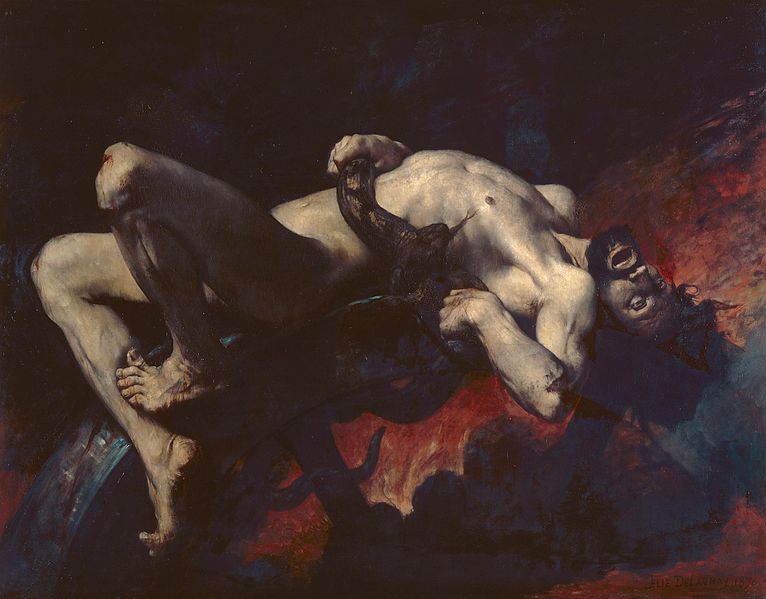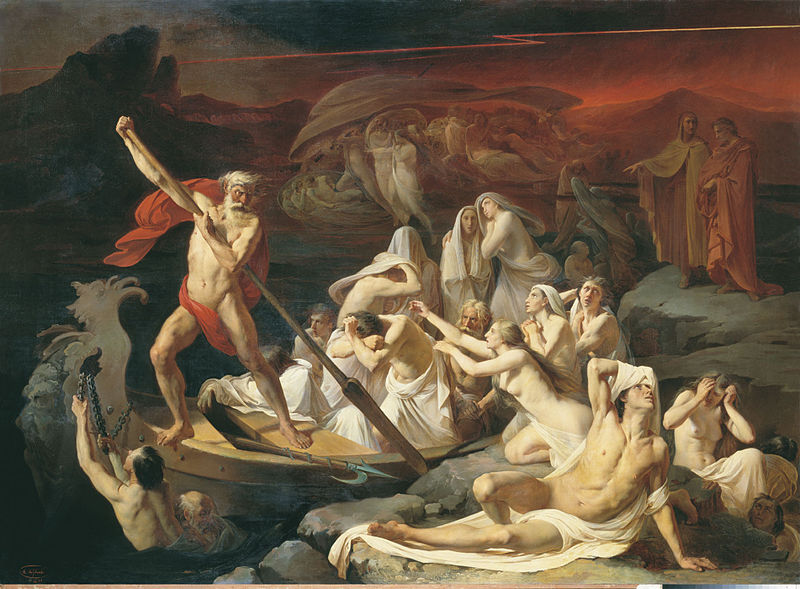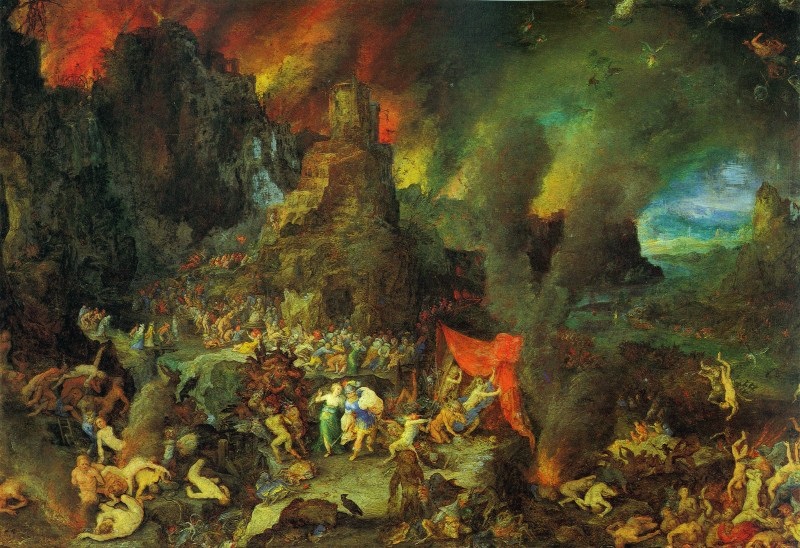 |
THE UNDERWORLD IN GREEK MYTHOLOGY
Category: Blogging
In
Greek mythology the Underworld was the domain of the Greek god Hades,
and the realm, as well as the concept of the Afterlife, would often
appear in stories, acting as a guide to how people should live their
lives.
The Greek God Hades
Hades is
the Greek deity most closely associated with the Underworld, although
the Greek Underworld existed before the rise of the Olympian gods.
Hades
would become linked with the Underworld after the Titanomachy, when the
sons of Cronus rose up against their father, and the other Titans.
Zeus,
Poseidon and Hades would then draw lots to divide the cosmos up, and
whilst Zeus was given heaven and earth, and Poseidon the world’s waters,
Hades was given dominion over the Underworld and the Afterlife.
The importance and power of Hades was recognised by the fact that the Underworld was often referred to as Hades.
The Role of the Underworld in Greek Mythology
It
is common to think of the Greek Underworld as simply a version of the
Christian Hell, and indeed, the term Hades, has historically been used
as a polite synonym for hell.
The Greek Underworld encompassed the whole Afterlife, containing both heaven and hell, where the righteous could be lavished upon, and the unworthy punished.
|
|

Ixion Punished in Tartarus - Jules-Élie Delaunay (1828-1891) - PD-art-100
In
Greek mythology, the common belief was the no-one who entered the
Underworld would ever leave it, and so, in theory, there was no way for
ancient writers to accurately describe the realm of Hades. That being
said some features were mentioned in the ancient sources.
The
general consensus was that the Underworld, unsurprisingly, was to be
found beneath the surface of the earth; although an alternate view had
it at the very end of the earth.
Entrances to the Underworld
If the domain of Hades was to be found underground, then many entrances to the Underworld were named in ancient sources.
A
cleft in the ground on Sicily was used by Hades, Orpheus and Heracles
both made use of a cave at Taenarum, Aeneas made use of a cave upon Lake
Avernus, Odysseus entered via Lake Acheron, and the Lernaean Hydra guarded another watery entrance.
The
perilous journey of Theseus to Athens around the Saronic Gulf also saw
the Greek hero pass 6 other known entrances to the Underworld.
The Regions of the Underworld
Generally
speaking, the Greek Underworld can be thought of as being made up of
three different regions; Tartarus, the Asphodel Meadows and Elysium.
Tartarus
was thought to be the deepest region of the Underworld, and a place
where it would take an anvil nine days to reach if allowed to fall from
the rest of the Underworld. Tartarus is the region of the Underworld normally associated with hell,
and was the area where punishment and imprisonment was undertaken; as
such it was the normal location of the imprisoned Titans, Tantalus,
Ixion and Sisyphus.
The
Asphodel Meadows was the region of the Underworld where the majority of
the deceased would end up, for it was the region of indifference, where
those who had lived neither an overly good nor an overly bad life would
end up. Having drunk from the River Lethe the deceased located here
would forget their previous lives, but would spend eternity in a
greyness of mindlessness.
Elysium,
or the Elysian Fields, was the region of the Underworld where mortals
were supposed to aspire to. Elysium was the home of the heroic, and the
region of the Underworld most closely associated with paradise. Inhabitants of Elysium would spend an eternity of pleasure free from work and strife.
|
|
The Rivers of the Underworld
Ancient
geographers would also talk of five rivers that traversed through the
Underworld. These rivers were the River Styx, the river of hatred, the
River Lethe, the river of forgetfulness, the River Phlegethon, the river
of fire, the River Cocytus, the river of wailing, and the River
Acheron, the river of pain.
The Acheron was the first river
encountered by the deceased when the Underworld was entered, and the
river across which Charon would ferry those that could afford to pay.

Charon carries souls across the river Styx - Alexander Litovchenko (1835–1890) - PD-art-100
|
The
Greek Underworld was of course not simply home to Hades and the
deceased, and it was a place inhabited by a range of deities, spirits,
demi-gods and creatures.
Hades would be joined in the Underworld
for half the year by his bride, Persephone, the daughter of Zeus who he
had abducted. Three kings, Minos, Aeacus, and Rhadamanthys, would also
reside in the Underworld, for they were the judges of the dead.
|
|
A range of Greek gods and goddesses also resided in the Underworld, including, Hecate, goddess of magic, Erebus, god of darkness, Nyx, goddess of the night, Thanatos, god of death, and Hypnos, god of sleep.
Also
found in the Underworld were the Erinyes (the Furies), Charon, the
ferryman, and Cerberus, the three headed guard dog of Hades.
Visitors to the Underworld
As
previously mentioned, the belief in Ancient Greece was that no-one who
entered the Underworld would ever leave it, but there were many stories
of people doing just that.
Heracles would enter the realm of
Hades and briefly remove Cerberus for one of his Labours; Orpheus would
enter as he tried to bring back his deceased wife, Eurydice; Odysseus
entered to gain directions home; Aeneas visits to see his deceased
father; and Psyche was looking for Eros.
Theseus and Pirithous
would also enter the Underworld together, but their quest was an
unworthy one, for Pirithous wished to take Persephone as
his bride. As a result, Theseus and Pirithous were imprisoned by Hades,
although Theseus would eventually be released by Heracles.

Aeneas and a Sibyl in the Underworld - Jan Brueghel the Elder (1568–1625) - PD-art-100
Back to Blog List
|